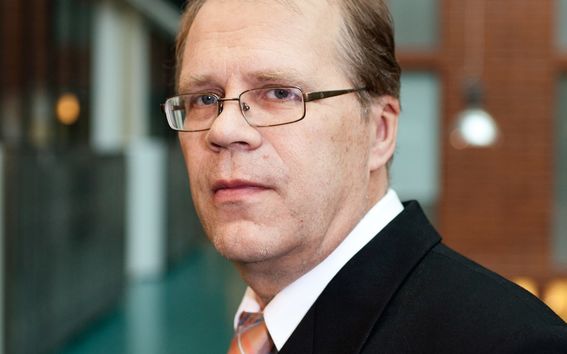Electronic Properties of Materials (EPM)

A wide range of different materials from semiconductors and insulators for electronics devices to novel materials for energy harvesting and storage are in focus. We have also long traditions in developing and implementing electronic structure methods needed in modelling materials and nanostructures.

Group leader
Martti Puska
Research
Our main tools are the various computer codes for the electronic structure, based mainly on the density-functional theory (DFT), including first-principles molecular dynamics, quantum transport, time-dependent extensions to treat excited states, and modern functionals to treat the van der Waals interactions and to improve the descriptions of the energy band gaps and band alignment. The first-principles results for crucial parameters are also the basis for modelling the properties and phenomena associated with longer length and time scales. Examples include the lattice kinetic Monte Carlo (LKMC) simulations and various tight-binding schemes.
Our research takes place in a close connection with experimental groups. Moreover, in order to be on the leading edge in applying electronic structure methods, it is important also to participate in developing theories, methods and computer implementations. This also requires collaboration with experts in numerical mathematics and in computer architecture.
Nanoplasmonics
Plasmonics is a research field that studies collective excitations of free delocalized electrons, known as plasmons. In nanoplasmonics, the focus is on nanometer-scale systems, such as metal nanoparticles. In our group, we use time-dependent density-functional theory (TDDFT) to deepen quantum-mechanical first-principles understanding on plasmonic excitations. Our research includes method development, technologically relevant plasmonic systems as well as fundamental quantum aspects of plasmonic resonances.
Electron tunnelling
In electronic tunnel junctions, current flows from one electrode to the other across a thin insulating barrier. This quantum mechanical effect of tunnelling is the basic feature underlying many solid-state nanoelectronic devices such as resonant tunnelling transistors, magnetic tunnel junctions, SQUIDs, qubits, energy storage devices and sensors. In our group, we use density functional theory (DFT) to study the atomic structure at the electrode-barrier interface and how they affect the shape and dimensions of the tunnel barrier. We also study electron transport across tunnel junctions and explore the effects of different single and double barrier structures on the tunnelling current.
Electronic transport in carbon nanotube thin films
Exceptionally good electrical conductivity and high mechanical strength of carbon nanotubes could be utilized in various future applications. In particular, carbon nanotube thin films are flexible and conductive materials that are suited to be used as transparent electrodes. The conductivity of the thin film is mainly determined by the resistances of the nanotube junctions. To enhance the film conductivity, the nanotubes can be doped and they can also be linked with transition metal atoms or by organic or inorganic molecules. We study the electronic transport properties of these kinds of systems using the Green's function method combined with the density functional theory.
Charge transfer at hybrid molecular-semiconductor interfaces
The objective of this project is the understanding of the physical factors influencing the excited state charge transfer at the hybrid molecular – semiconductor interfaces. A particular attention is paid to the optimization of the semiconductor structure, anchoring form and dye sensitizer with the aim to achieve the required electron injection efficiency. For this purpose, the interfacial charge transfer process is simulated at the atomistic level applying Real-Time Time-Dependent Density Functional Theory (RT-TDDFT) and Ehrenfest Dynamics (ED) approaches.
Charged defects in 2D materials
Calculations of charged defects in 2D materials with the supercell approach suffer from a strong and anisotropic spurious electrostatic interactions between the charge and its periodic images. We have developed an a posteriori method for correcting the energies. The applicability of the method was demonstrated in the case of substitutional and adatom defects at monolayers of BN and MoS2.
Thin-film solar cells
A new European research project that goes by the name Sharc25 is setting out to make an extremely efficient thin-film solar cell for the next generation of more cost-effective solar modules. Its objective is to achieve up to 25 percent efficiency in thin-film solar cells made by the co-evaporation of copper indium gallium (di)selenide, or CIGS for short. Our task in this project is to model the properties of intrinsic point defects (vacancies, interstitials, antisites, and their complexes) and impurities in CuInSe2 (CIS) and CuGaSe2 (CGS) to understanding evolution of microstructures during the manufacture and use of solar cells.






